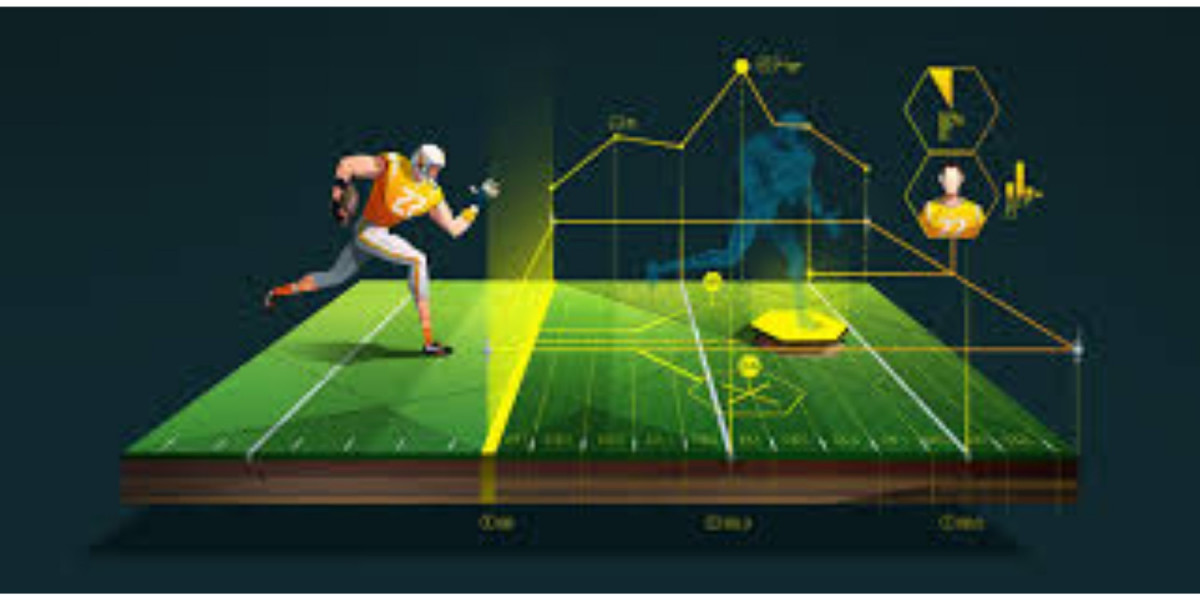In today’s fast-paced athletic world, sports analysis has become a game-changer for individual athletes looking to elevate their performance and personal growth. Gone are the days when athletes relied solely on instinct, coach’s advice, or raw talent. Now, thanks to advances in technology and data science, athletes can harness the power of precise analytics to unlock their full potential. Whether you’re a runner, a tennis player, a golfer, or a swimmer, sports analysis offers you a way to understand your strengths, identify weaknesses, and chart a clear path to improvement.
In this article, we’ll explore how sports analysis helps individual athletes grow personally and professionally, the types of data involved, the tools available, and how to make the most of this data-driven approach for lasting success.
What Is Sports Analysis?
At its core, sports analysis involves collecting, processing, and interpreting data related to athletic performance. This data can range from simple stats like lap times or scores to complex biomechanical readings captured by wearable sensors. The goal is to provide actionable insights that guide training, technique adjustments, and mental preparation.
While sports analysis is often associated with team sports, individual athletes stand to benefit immensely. Unlike team dynamics, individual sports focus heavily on personal technique, conditioning, and mental fortitude—areas that data can illuminate in surprising ways.
Why Sports Analysis Matters for Individual Athletes
For an individual athlete, every second, every movement, and every decision matters. Here’s why sports analysis is a critical tool for personal growth:
1. Objective Measurement of Performance
Traditional training relies heavily on subjective assessments — how an athlete feels or what a coach observes. But feelings and observations can be biased or incomplete. Sports analysis provides objective data that cuts through assumptions. It shows exactly where you excel and where you lag, offering a clearer picture of performance.
2. Personalized Training Plans
Data-driven insights allow athletes to design personalized training regimens based on their unique strengths and weaknesses. For example, a sprinter might discover through video analysis that their starting stance wastes energy. With this knowledge, training can be adjusted specifically to improve that aspect, rather than following a generic plan.
3. Tracking Progress Over Time
One of the most motivating aspects of sports analysis is the ability to track improvement quantitatively. Whether it’s shaving seconds off a swim time or increasing accuracy in archery, seeing real progress in numbers boosts confidence and fuels commitment.
4. Injury Prevention and Recovery
Sports analysis tools often include biomechanical assessments that detect poor form or imbalances, which can lead to injury. By correcting these early, athletes reduce downtime and maintain consistent growth.
5. Mental Preparation and Focus
Modern sports analysis isn’t just about physical data. Psychological metrics, such as stress levels and focus patterns, can also be tracked through wearables and cognitive tests. Understanding mental states helps athletes prepare better for competition and build resilience.
Key Types of Data in Sports Analysis for Individuals
Different sports and athletes will prioritize different kinds of data, but here are some common categories that play a big role in personal growth:
Performance Metrics
Speed, pace, and timing: Crucial for runners, swimmers, cyclists, and others.
Accuracy and precision: Important for sports like archery, shooting, or tennis.
Power output: Measures strength in activities such as weightlifting or cycling.
Biomechanical Data
Motion capture and video analysis: Identifies posture, joint angles, and movement efficiency.
Force and pressure sensors: Used in running shoes or grip equipment to assess impact and balance.
Heart rate and VO2 max: Indicate cardiovascular fitness levels.
Training Load and Recovery
Workout intensity and volume: Monitors how hard and how often an athlete trains.
Sleep quality and rest: Helps ensure adequate recovery.
Injury reports and pain tracking: Crucial for avoiding setbacks.
Psychological and Cognitive Data
Stress levels and emotional state: Measured through wearables or self-reporting apps.
Focus and reaction time: Tracked through cognitive tests.
Motivation levels: Assessed via questionnaires or behavioral analytics.
Tools and Technologies Used in Sports Analysis
Athletes today have access to a vast array of technology designed to capture and analyze data:
Wearable Devices: Fitness trackers, smartwatches, heart rate monitors, and GPS sensors provide real-time data.
Mobile Apps: Many apps offer training logs, video analysis, and progress charts.
Video Analysis Software: Allows frame-by-frame breakdown of technique.
Force Plates and Pressure Sensors: Measure force exerted during movement.
Motion Capture Systems: Capture detailed biomechanical data in 3D.
AI and Machine Learning: Advanced platforms analyze large datasets to predict trends and offer recommendations.
How to Use Sports Analysis for Personal Growth
If you’re an individual athlete looking to leverage sports analysis, here are some practical steps:
1. Define Your Goals
Start by setting clear, measurable goals. Are you aiming to improve speed, endurance, technique, or mental focus? Your goals will guide which data to collect and which tools to use.
2. Collect Data Consistently
Regular data collection is key. Whether it’s recording training sessions, logging workouts, or using wearables, consistency ensures accurate trend analysis.
3. Analyze and Interpret Your Data
Simply collecting data isn’t enough. Learn how to interpret the numbers or work with a coach or analyst who can help you understand what the data means for your performance.
4. Adjust Your Training Based on Insights
Use the insights to tweak your training plan. For example, if analysis reveals a weakness in explosive power, incorporate specific exercises to build that.
5. Monitor Progress and Reassess
Set periodic checkpoints to assess your progress. Celebrate improvements and adjust your goals and training accordingly.
6. Don’t Forget the Mental Side
Incorporate mental training tools based on psychological data. Techniques such as visualization, mindfulness, and stress management can be crucial for peak performance.
Real-Life Example: How Sports Analysis Transformed an Athlete
Consider the case of Sarah, an amateur triathlete struggling with her cycling segment. Using sports analysis tools like a GPS-enabled bike computer and heart rate monitor, she tracked her speed, cadence, and power output over several weeks. Video analysis helped her identify an inefficient pedaling technique causing fatigue.
With this data, Sarah worked with her coach to refine her technique and adjust her training load. Within two months, her cycling time improved significantly, and she felt stronger in subsequent races. The objective data motivated her, and the insights enabled her to train smarter, not just harder.
The Future of Sports Analysis for Individual Athletes
The future is bright for athletes embracing data. Artificial intelligence and machine learning will provide even more personalized insights. Wearables will become less intrusive and more accurate, giving continuous feedback. Virtual and augmented reality may enhance training by simulating competitive environments.
As data becomes more accessible, individual athletes at all levels will benefit from a level of analysis once reserved for professionals. This democratization of sports analysis means that anyone committed to personal growth can use data to achieve their athletic dreams.
Conclusion
Sports analysis is no longer a luxury but a necessity for individual athletes committed to personal growth and peak performance. By leveraging objective data, personalized insights, and innovative technology, athletes gain a deeper understanding of their abilities and how to improve them. From tracking progress to preventing injury and enhancing mental resilience, the benefits are vast.
Whether you’re just starting out or looking to break through a performance plateau, embracing sports analysis can transform your training and results. The data is there — it’s time to use it to grow stronger, faster, and smarter.










